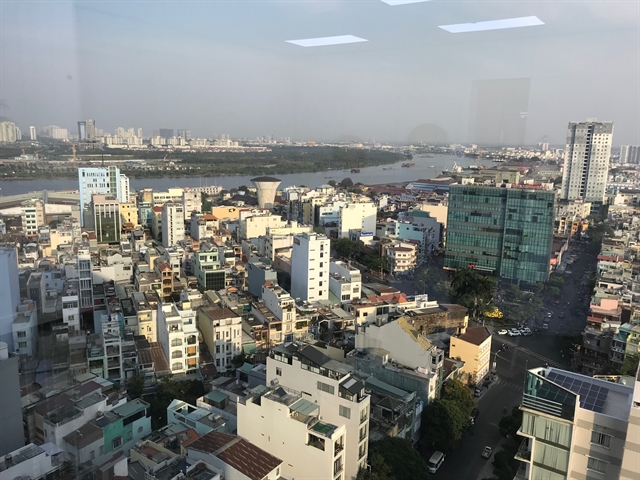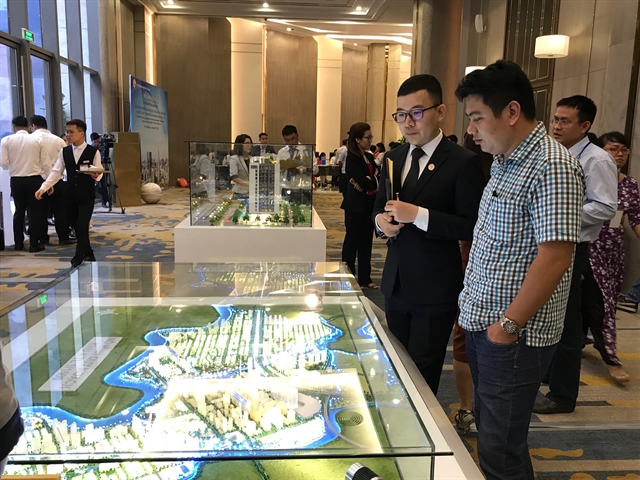 Society
Society


|
| The average housing area per person in HCM City is 19.9 square metres. VNS Photo Gia Lộc |
HCM CITY— Housing development is of paramount importance to HCM City as the city is expected to see an increase of one million people every five years in the 2021-35 period, according to Võ Văn Hoan, vice chairman of the city People’s Committee.
Speaking on the sidelines of a conference on housing solutions held yesterday in HCM City, Hoan said that housing development should correspond with economic growth and transport infrastructure development in the southern economic zone and southwestern and eastern regions.
“More attention should be paid to low-income people,” he said, adding that many commercially housing projects had been carried out.
"The city needs more apartment buildings with parks and entertainment areas that are important for residents’ life," he said.
“Housing quality should be high for low-income people also,” Hoan said.
City authorities plan to call on the private sector to invest in low-income housing, according to Hoan.
The committee is also working with the city’s Department of Construction to review and amend policies to create favourable conditions for enterprises to invest in such housing and for residents to be able to buy them.
The city has 1.9 million units of housing (including apartments) covering 182 million square metres.
Within the 2016-2020 period, the city aims to build an additional 40 million sq m of floor space, raising the average housing area per person to 19.8 sq m by 2020 from 17.32 sq m per person in 2015.
As of June, the average housing area per person was 19.9 square metres.
Commercial housing projects, social housing, and buildings for workers and dormitories for students are all part of the city’s housing stock.
The department forecasts that the city will need 45 million square metres of floor space between 2021 and 2025.
Lê Hoàng Châu, chairman of the HCM City Real Estate Association, said: “The city’s biggest and most difficult problem is to solve housing needs for a large number of low-income and middle-income people, including state officials, students, workers, and migrants, to ensure social welfare and sustainable development.”
The city has nearly 476,000 households who do not own their own homes and live with relatives, accounting for 25 per cent of its total. Of the 476,000 households, more than 20,000 live on and near canals and 35,000 in old apartment buildings that need to be improved.
Many of them buy apartments in social housing projects which they can buy on hire-purchase or buy units in commercial housing valued up to VNĐ1 billion (US$43,049). They also need to rent apartments at inexpensive prices.

|
Lê Hữu Nghĩa, general director of Lê Thành Real Estate Company, said that red tape was the barrier for real estate companies to invest in social housing projects.
His company, for instance, applied for approval for a new social housing project in Bình Chánh District in March, but the application has not been submitted to the city’s People’s Committee.
“It could take five years to complete legal procedures for the implementation of the project,” Nghĩa said.
The Government should develop separate policies for approval of social housing projects and commercial housing projects, he said.
Yap Kioe Sheng of the Asian Institute of Technology in Thailand said that cities in developing countries were growing rapidly as a result of natural growth due to relatively young populations and of rural-urban migration triggered by urban economic growth and rise of economic opportunities in cities.
“The challenge for those cities is to see that the growing population is adequately housed,” Sheng said.
An urban housing policy needs to deal with the housing demand of both the local population, particularly low- and middle-income, and migrants, and the demand for both homeownership and rental housing, according to Sheng.
“Given the diversity in demand from the low-income population, it is necessary to diversify the supply of affordable housing in terms of house type, location, tenure, adaptability and financing,” he said.
Each of the locations should offer one or more housing types, Sheng said.
“Such a diverse low-income housing programme is a complex operation which cannot be implemented by the public sector or the private sector on its own,” he added. VNS